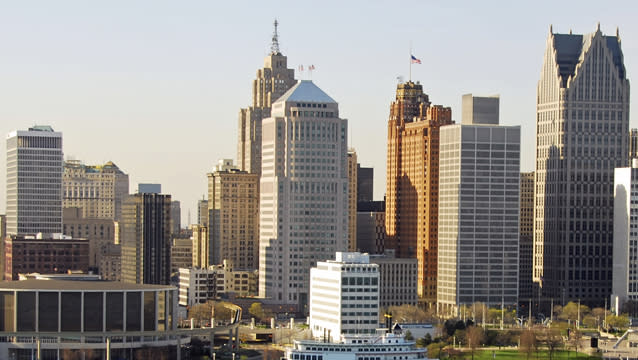Detroit Will Get Worse Before It Gets Better

Detroit filed for bankruptcy protection on Thursday and the Motor City’s debts and liabilities are estimated to be as high as $20 billion, making Detroit’s bankruptcy the largest in U.S. history. Heidi Ewing, a Michigan native and co-director of “Detropia,” a documentary that gives an unvarnished look into Detroit’s political dysfunction and financial decay, expects more hardships for city residents as a result of the bankruptcy filing.
“Detroit is on its knees…people were thinking Detroit was already at the bottom," she tells The Daily Ticker. "Well I think we may have a little further to go. It’s very possible city services will be cut back even further. Those people who have chosen to stay in Detroit or couldn’t leave will bare the brunt of this bankruptcy.”
Related: Why We Should Care About Detroit's Future
Ewing and her producing partner Rachel Grady spent more than a year in Detroit chronicling the personal predicaments of residents and workers in their crumbling city. According to Michigan Governor Rick Snyder, there are 78,000 abandoned buildings in Detroit. One third of Detroit's residents live in poverty and about a fifth are unemployed, reports Reuters. The recent renaissance that has been taking place in downtown Detroit, one led by artists, hipsters and Dan Gilbert – the founder and chairman of Quicken Loans – has been exaggerated and aggrandized by the media, Ewing argues.
“650,000 of the 715,000 residents aren’t aware of what’s happening and aren’t affected by it at all,” she says. “To believe this could fix 60, 70 years of a slide, it’s not reality."
Detroit’s failure to diversify its economy is one reason the city finds itself in dire straits, according to Ewing. Unlike Pittsburgh and Cleveland, two former manufacturing powerhouses that turned around their finances by catering to growing industries such as health care, Detroit still clings to its past. The city’s heavy reliance on the auto industry and America’s driving culture contributed to its downfall, Ewing explains.
“Detroit is extremely sprawling and spread out and there’s no public transportation that functions,” Ewing notes. “There is four times the amount of land you need for the number of residents.”
The total amount of money Detroit owes its creditors has become a point of contention among city and state officials and there is no clear roadmap for how Detroit can get out of bankruptcy. According to The New York Times, only 60 U.S. cities, towns, villages and counties have filed under Chapter 9 since the mid-1950s.
Ewing says Detroit can survive if its residents move to one or two dense neighborhoods and the rest of the city is transformed into farmland or lumber fields. But Ewing concedes that solution has serious obstacles.
“You can’t use eminent domain in Detroit and you can’t force people to move,” she says. “There is no financial incentive to get people to move. If there were one, a lot of people would consider it. But there’s no money to do that.”
Tell Us What You Think!
Got a topic you’d like covered? Have a guest you’d like to see interviewed? Send an email to: thedailyticker@yahoo.com.
You can also look us up on Twitter and Facebook.
More from The Daily Ticker:
Does It Matter That Americans Are 'Subsidizing' Astronomical CEO Pay?
Whalen: "We Went Way Too Far With Dodd-Frank"
Here's What Tesla, Microsoft, Boeing and Best Buy Have in Common
